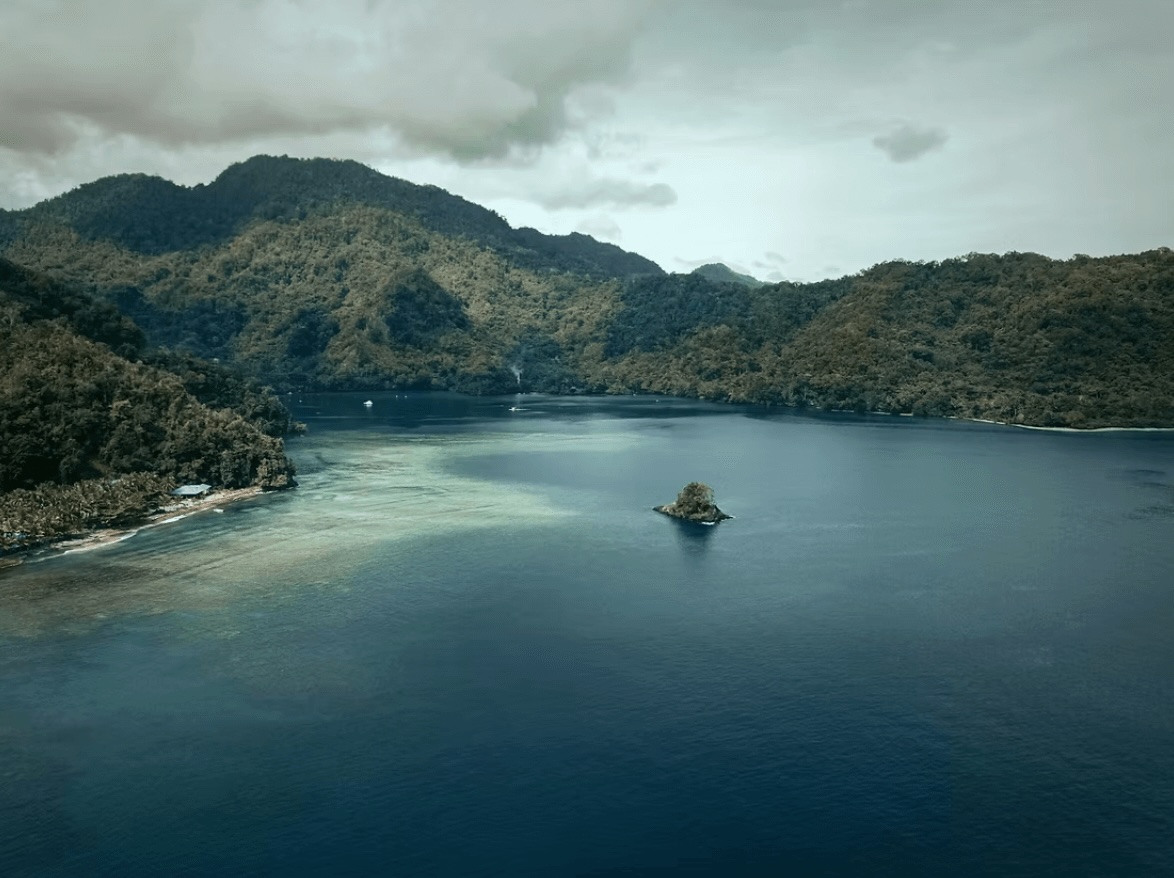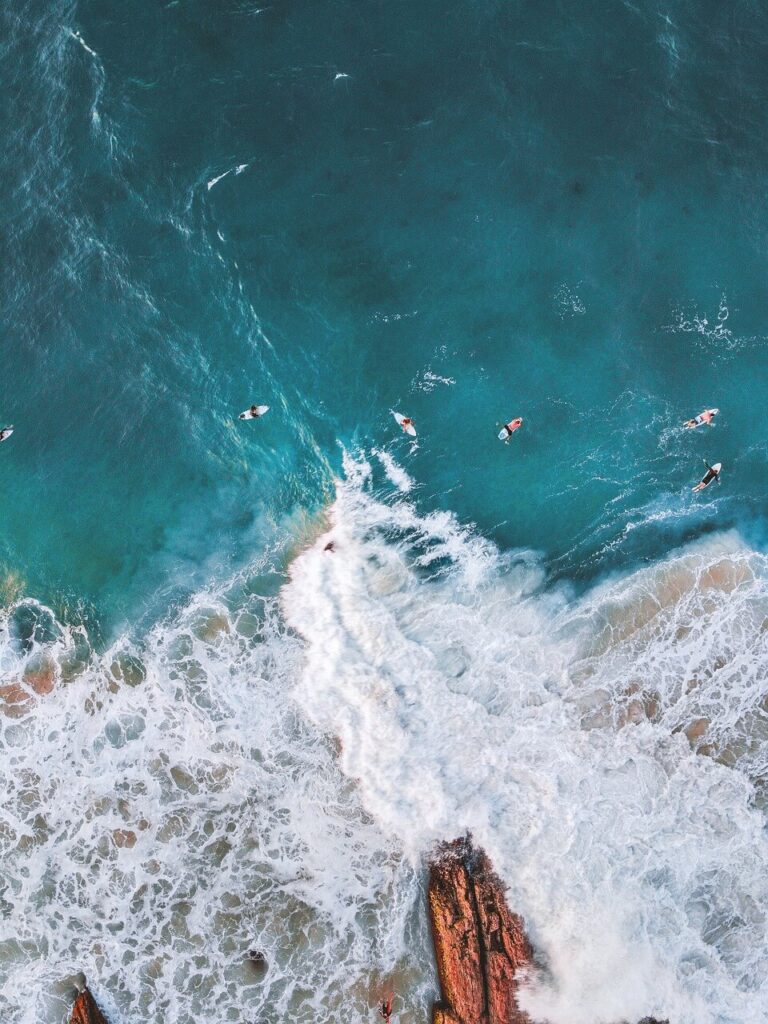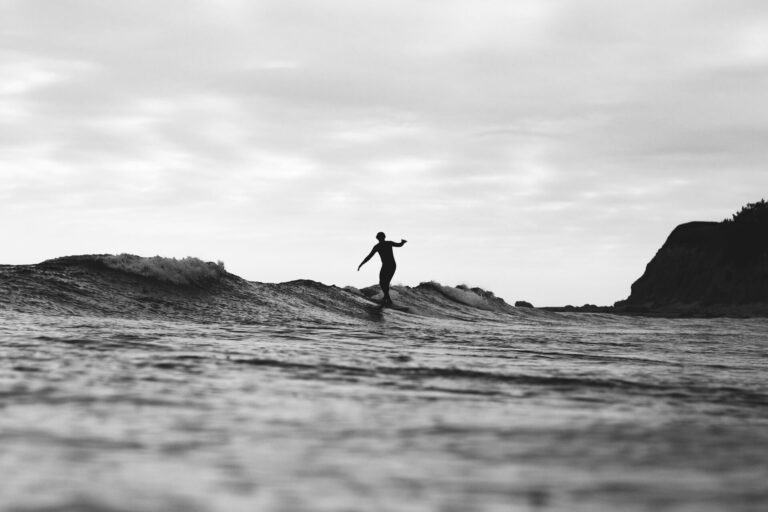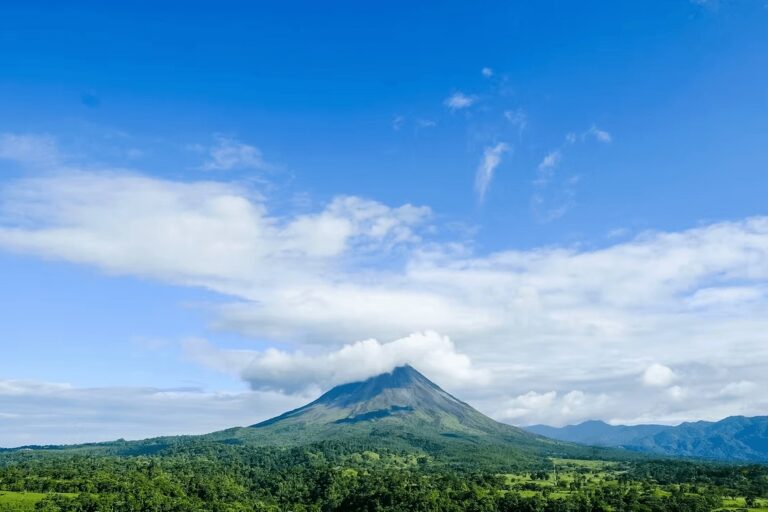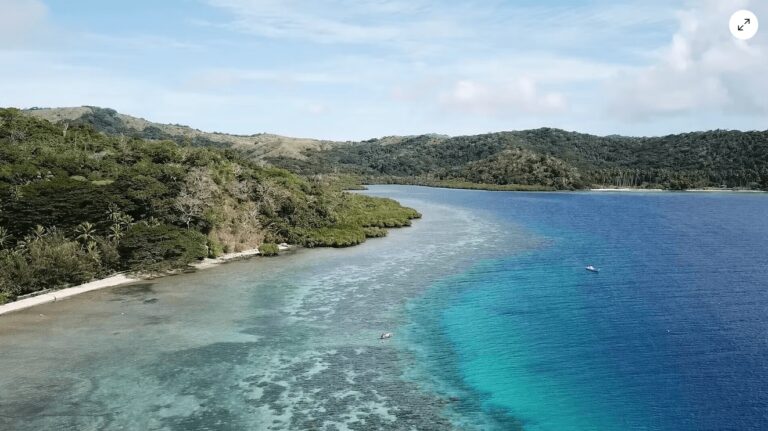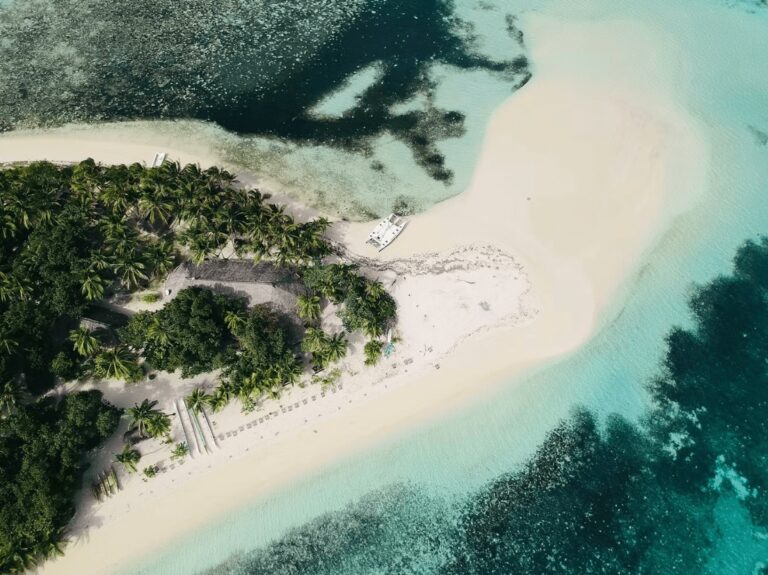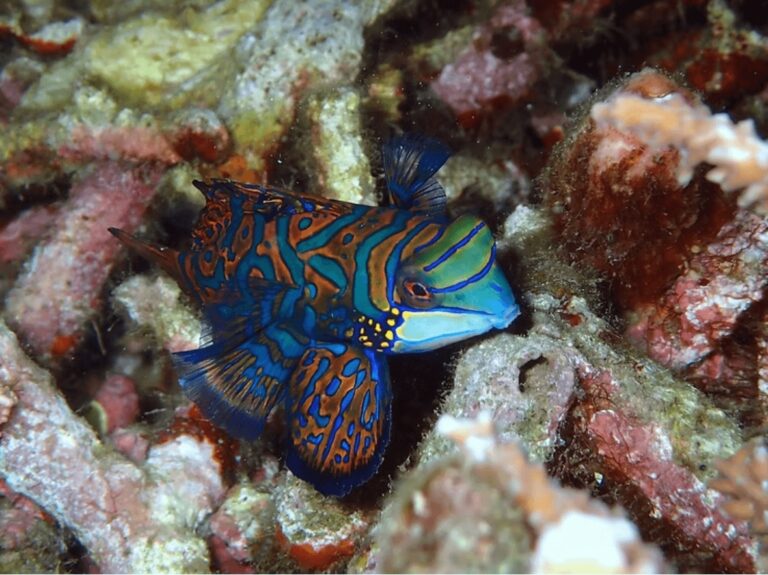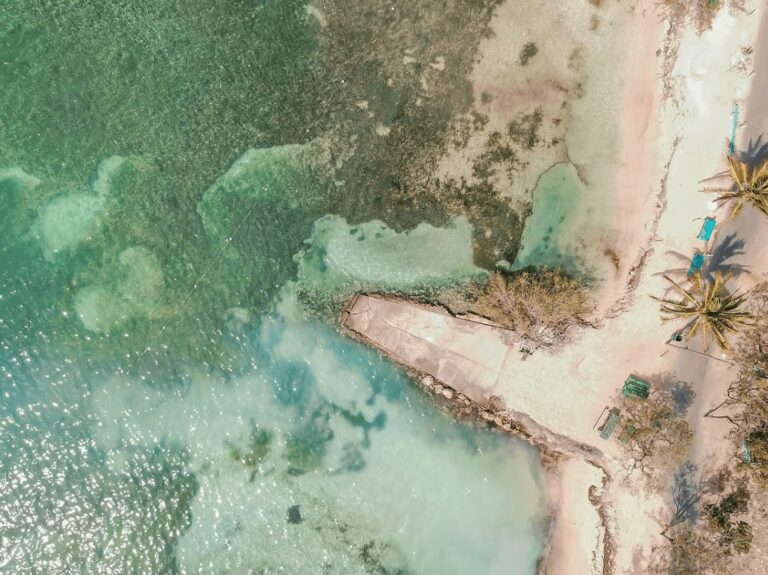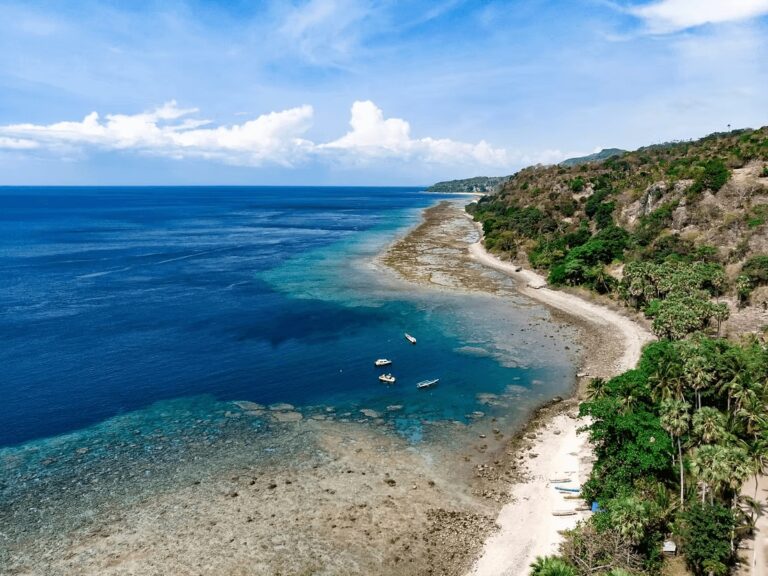Scuba Diving in Papua New Guinea: Best Dive Sites + Dive Resorts
Looking for the best diving in Papua New Guinea? Discover everything you need to know about PNG scuba diving, including highly-rated dive resorts to help you plan an unforgettable scuba vacation.
Hugging the eastern half of the island of New Guinea, Papua New Guinea is a little-visited Melanesian gem for intrepid divers.
Surrounded by the Bismarck, Coral and Solomon Seas, it boasts over 600 islands and a mainland coastline punctuated by secluded coves, dramatic volcanoes and dense rainforests.
Papua New Guinea’s position within the Coral Triangle has fostered an incredible diversity of marine life. This includes over 2,000 species of tropical fish and 500 types of coral.
It offers access to some of the most unspoiled dive sites in the world, with spectacular wall dives, mesmerising reefs and World War II wrecks shrouded in coral.
The nutrient-rich waters surrounding PNG also foster a diversity of seagrasses, mangroves and algae. Collectively, they serve as critical marine habitats and contribute to exceptional Papua New Guinea diving conditions.
Oh, and did we mention the black sand muck diving here is second to none! Added to that, the underwater experiences in Papua New Guinea are blissfully uncrowded. It really is a dream dive destination in Oceania.
In this article, we’ll highlight 6 of the best places to dive in Papua New Guinea, from Kavieng to Kimbe Bay and Rabaul. We’ll also share some of the most highly-rated dive resorts in PNG to help make your scuba vacation happen.
Papua New Guinea is also an incredible surf destination. Discover everything you need to know here.

This article contains affiliate links, which means when you make a purchase through that link, we earn a small commission. Affiliate links come at no cost to you and ensure our content remains free!
Kimbe Bay scuba diving
Located on the northern coast of mountainous New Britain, Kimbe Bay’s protected waters harbour a spectacular underwater world.
This enormous bay, fringed by dense rainforest and looming volcanoes, offers access to some of the most biodiverse waters in the South Pacific region.
Kimbe Bay’s sprawling reef system boasts over 400 documented species of coral and reef fish in every shape and colour imaginable. Schools of barracuda and trevally hunt alongside hawksbill turtles. Meanwhile, reef sharks patrol the outer reef slopes that plunge into the deep blue beyond.
Closer to shore, you’ll find shallow fringing reefs, home to everything from swaying sea fans to technicolour nudibranchs. In short, Kimbe Bay offers some of the best reef diving in Papua New Guinea.
Beyond the main bay, intrepid divers can explore the Witu Islands, a cluster of eroded volcanic peaks that rise abruptly from the sea. Hard and soft corals cloak these underwater pinnacles, which attract large pelagics like mackerel, tuna and even whale sharks.
With more than 40 dive sites to choose from, it’s no wonder Kimbe Bay is considered one of the best places to dive in Papua New Guinea.
Best place to stay in Kimbe Bay
Walindi Plantation Resort
Founded in 1983 as a family-run operation, Walindi Plantation Resort is a pioneer of sustainable tourism and community engagement in Papua New Guinea.
The resort comprises 20 thoughtfully designed bungalows that blend seamlessly into the natural beauty of the bay. It also partners with two liveaboard vessels that allow guests to explore further afield.
Walindi offers much more than diving alone. There are opportunities for bird watching, learning about World War II history and visiting local villages, as well as soaking in thermal hot river pools and climbing volcanoes.
Through it all, Walindi remains deeply committed to environmental education and protection. Over the years, it has prioritised community consultation to ensure tourism positively impacts the traditional landowners of Papua New Guinea.
“Lovely place to stay, diving was excellent, plus lovely gardens and friendly staff. Paradise!” – Tanya (read more reviews here)
Planning a scuba trip to Melanesia? Discover all of the best places to dive in the Solomon Islands here.

Milne Bay scuba diving
On the southeastern tip of Papua New Guinea’s main island is Milne Bay. It’s a biodiverse marine area and one of the best places for wreck diving in Papua New Guinea.
The main draw for divers is the wreck of a B-17 bomber called the “BlackJack”. This World War II aircraft was ditched in shallow waters after it ran low on fuel during a bombing run.
Amazingly, the intact plane settled upright on the sandy bottom in less than 30 metres (100 feet) of water. As a result, it’s accessible to divers of all skill levels.
Over the decades, corals and sponges have enveloped the plane, transforming it into a stunning artificial reef. Schools of snapper, trevally and barracuda swarm the exterior while grey reef sharks and wobbegongs laze about within.
Many divers consider the “BlackJack” the premier aircraft wreck, not just in Papua New Guinea, but the entire world.
Milne Bay also offers some of PNG’s best muck diving. Blue ribbon eels snake through tiny holes, while cockatoo waspfish and manta shrimps camouflage themselves in the sand.
Octopuses, cuttlefish, pipefish and nudibranchs of every colour and shape can be found by patient divers focused on the little things.
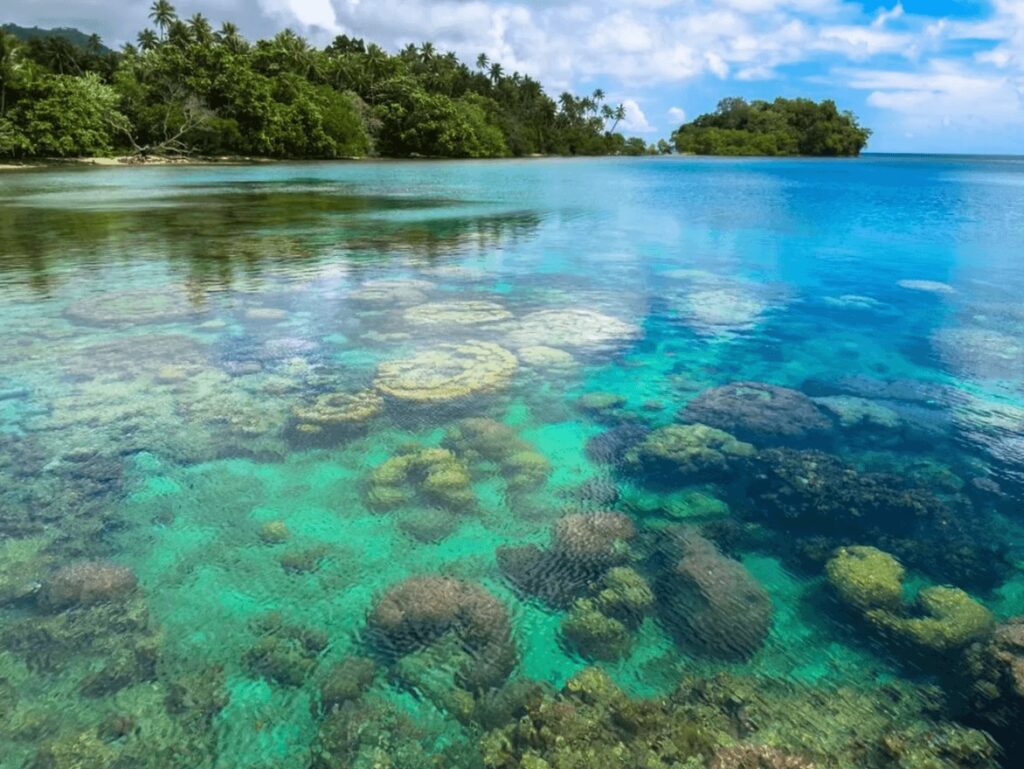
Best place to stay in Milne Bay
Tawali Dive Resort
Tucked away and only accessible by boat is what may be Papua New Guinea’s best-kept scuba diving secret – Tawali Dive Resort.
It’s situated on a volcanic bluff overlooking the protected waters of Milne Bay, providing divers with a one-of-a-kind setting.
Thanks to its sheltered position, Tawali enjoys protection from the prevailing southeast winds. This means its 24 spectacular dive sites are reliably accessible for aquatic adventures.
Covered walkways connect the spacious guest bungalows, each with a private balcony offering enviable views.
“Incredible spot ideal for diving, snorkeling and unwinding far away from the outside world!!” – George (read more reviews here)
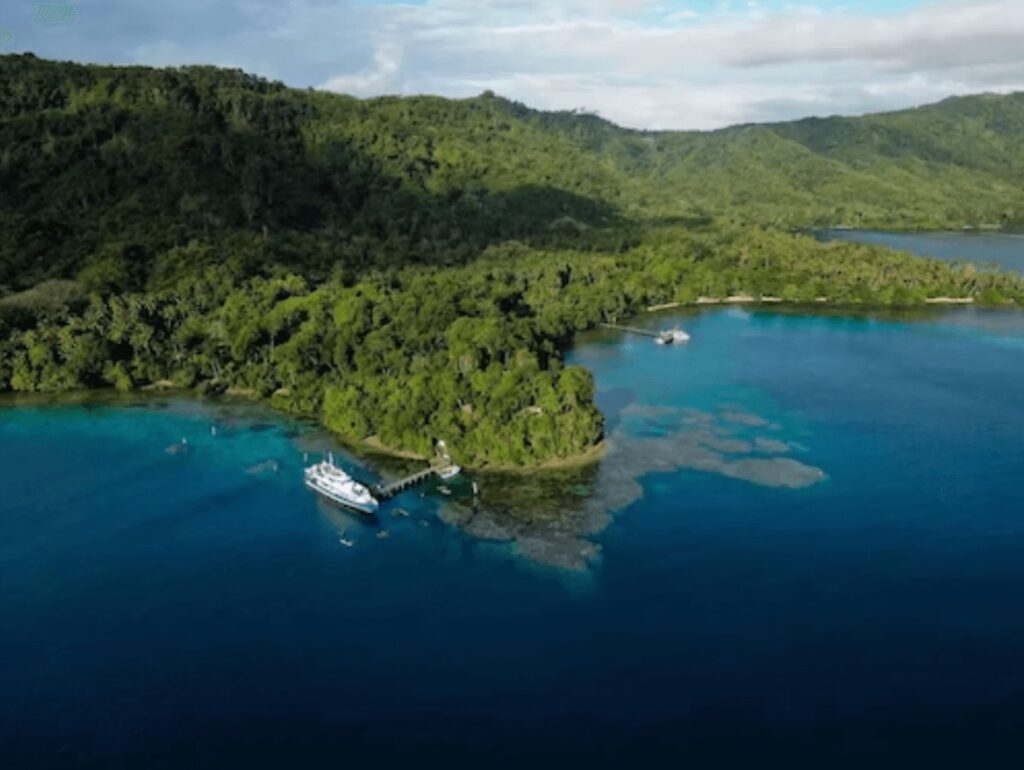
Kavieng scuba diving
Positioned at the northern tip of New Ireland, Kavieng is another fantastic spot for wreck diving in Papua New Guinea.
With a plethora of shipwrecks peppered across the seafloor surrounding the island, Kavieng offers plenty to keep scuba enthusiasts entertained. Divers can explore the eerie remains of World War II-era fighter planes, merchant ships and submarines that have been transformed into artificial reefs.
The Bismarck Sea side of New Ireland also boasts spectacular reef diving. There’s the opportunity to get up close to a huge diversity of tropical fish, sea turtles and giant clams.
The coral reefs here provide a habitat for sea fans and sponges in myriad colours, as well as leaf scorpionfish and pygmy seahorses.
Additionally, large pelagic species like manta rays, whale sharks, marlin and tuna migrate through the area year-round. In short, diving in the Bismarck Sea is an experience you won’t soon forget!
Kavieng’s most famous dive site is undoubtedly Albatross Passage. Here, strong currents funnel through the channel between New Ireland and Aua Island, creating a thrilling drift dive.
Divers clutch onto bommies and coral heads as schools of barracuda, jacks and bumphead parrotfish circle a staggering array of hard and soft corals.
Best place to stay in Kavieng
Lissenung Island Resort
Lissenung Island Resort is a secluded tropical paradise that caters perfectly to divers visiting Kavieng. On arrival at this PNG dive resort, you’ll be greeted by swaying palm trees, powder-white sand beaches and a phenomenal house reef to explore.
The resort’s heart and soul is the on-site dive centre. It’s fully outfitted with the latest gear and equipment to support up to three boat dives per day.
Whether exploring the area’s coral gardens or diving deep drop-offs blanketed in sea fans, the underwater scenery surrounding the island is sublime.
After a full day of cruising the reefs and spotting everything from pygmy seahorses to reef sharks, divers can relax on the beach while sipping tropical cocktails.

Rabaul scuba diving
On the eastern tip of New Britain Island are Rabaul and the Duke of York Islands. They offer a glimpse into the volcanic forces that shaped this region over thousands of years.
At the heart of Rabaul lies Simpson Harbour, a tranquil inlet formed from the flooded caldera of a massive volcano.
During World War II, Japan transformed Rabaul into a major military base, fortifying the natural defences of the harbour and volcanic rim. By 1942, the port was a hive of activity as Japanese ships streamed in with troops and supplies.
Allied forces launched repeated bombing raids to neutralise the threat, sending over 50 vessels to the bottom of Simpson Harbour. Today, Rabaul is considered one of the best places for wreck diving in Papua New Guinea or anyone interested in the country’s wartime past.
While some of the wrecks became obscured over time by volcanic ash and sediment, at least 10 are still known and explored by divers today. These include transporters, freighters and warships stopped forever in their tracks.

Best place to stay in Rabaul
Kokopo Beach Bungalows Resort
Set on the shores of Kokopo, this Papua New Guinea dive resort provides access to a variety of World War II-era wrecks and artefacts. These include a Japanese Mitsubishi F1M1 Naval Type ‘O’ observation seaplane.
Rabaul Dive Adventures is located right in front of the resort and serves as the on-site dive operation. It offers daily dive trips to explore everything the area has to offer.
The resort itself features 43 contemporary rooms and six apartment-style accommodations. Additionally, there’s a lively beachfront restaurant offering magnificent views of the volcanoes in the distance.
When you’re not out snorkelling and diving, you can lounge beside the lagoon-style swimming pool, embark on a jungle safari or simply relax with a cocktail on the palm-fringed beach.
“Wonderful Resort! Would definitely visit again soon!” – Daniel (read more reviews here)
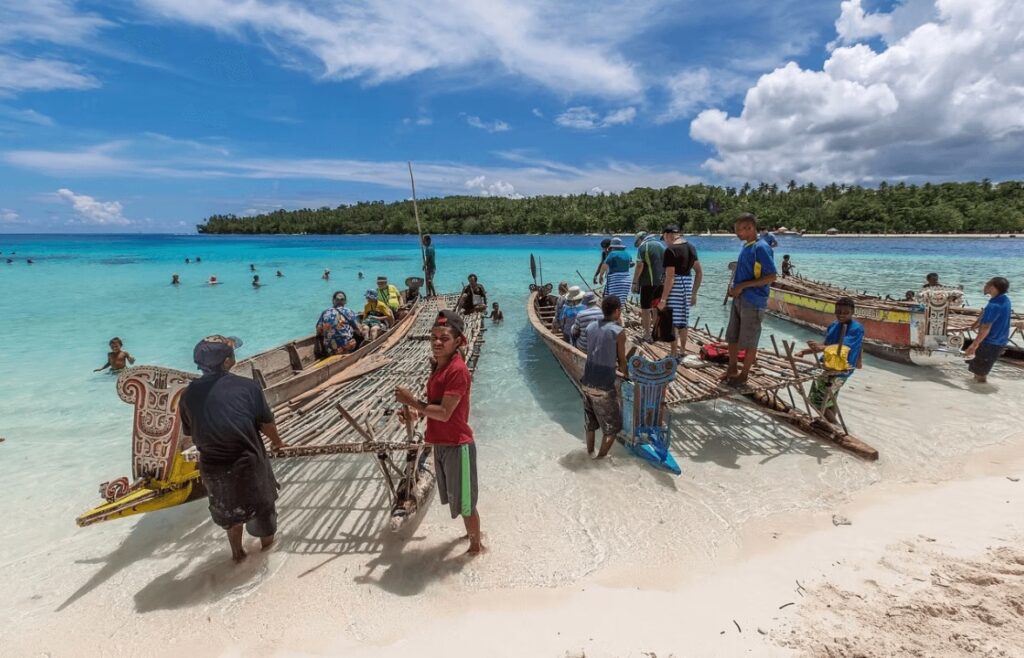
Tufi scuba diving
Tufi is a hidden gem positioned at the very tip of Cape Nelson in Oro Province. Surrounded by majestic fjord landscapes, it has earned the nickname: “Scandinavia of the Tropics.”
Unlike the icy glacial fjords of Norway, Tufi’s breathtaking rias were formed long ago by the ancient eruptions of three nearby volcanoes. The scenery here is simply sublime!
The lack of current movement in the rias has allowed corals to thrive and created a diverse “critter heaven.” Tufi is an incredible place for macro diving in Papua New Guinea!
Sponges, anemones, sea fans and hard corals cover the sloping walls. At the same time, schools of tiny fish like mandarin fish, ghost pipefish and pygmy seahorses move between the branches.
The diversity here is mesmerising, making Tufi a paradise for underwater photographers and critter seekers alike.
Dotting the coastline are tiny villages, each providing a peaceful backdrop for visitors to relax in between dive adventures.
The area has become renowned for its production of tapa cloth, made from paper mulberry tree bark and decorated with traditional designs.
For those seeking a more active experience, sea kayaking along the silent fjords is a wonderful way to explore the coastline.
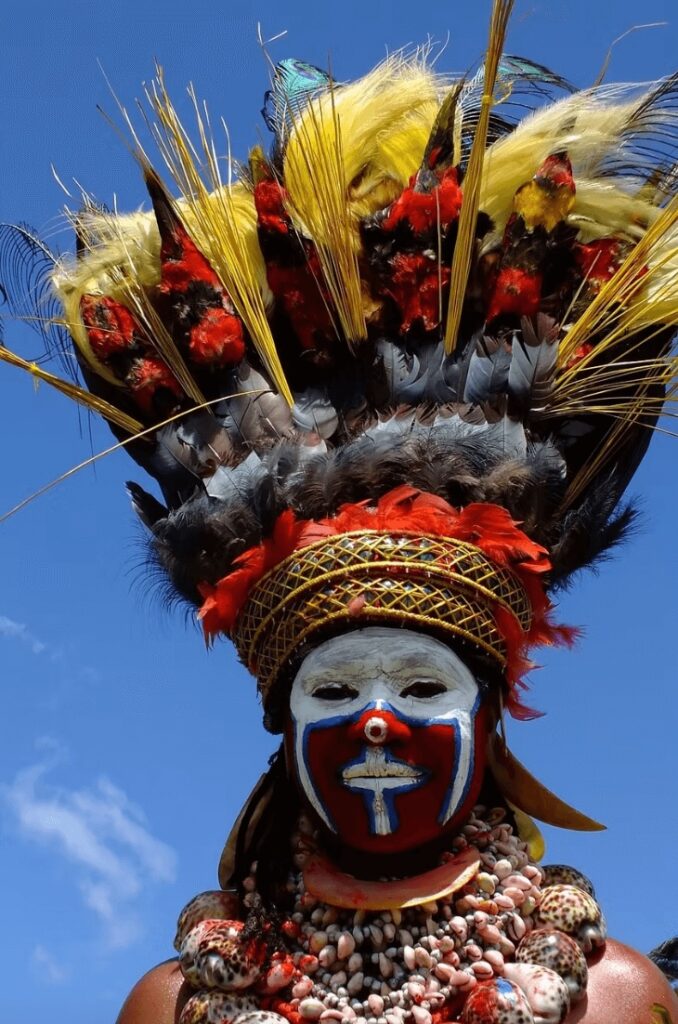
Best place to stay in Tufi for divers
Tufi Resort
Situated in one of Papua New Guinea’s most awe-inspiring locations, Tufi Resort is surrounded on all sides by towering cliffs that plunge dramatically into the blue waters of the fjords below.
At this PNG dive resort, you’ll find a collection of cosy bungalows perched high above the water.
The main lodge features a restaurant serving fresh local seafood and a bar perfect for watching the sunset. It goes without saying that the friendly staff are ready to cater to your every need.
But the real highlight of Tufi is what lies beneath the water, with scuba experiences to satisfy any level of diver. The dive team here is second to none and will ensure both beginners and seasoned divers are well-catered for.
“The views of the fjords from the deck are beautiful, and the diving is incredible.” – Sonya (read more reviews here)

Madang scuba diving
Located on the northern coast of Papua New Guinea’s main island, Madang is often overlooked by divers travelling to this corner of the globe.
Situated on the shores of an expansive lagoon dotted with reefs and islands, we think Madang has some wonderful dive sites for scuba enthusiasts to explore.
Schools of butterflyfish flit amongst the corals while angelfish and damselfish dart in and out of crevices.
While reef sharks prowl the area, the real highlight here are the epaulette sharks – strange little creatures that propel themselves along the bottom on their pectoral fins. With their unique locomotion and limited home range, these sharks have evolved over millennia to thrive in Madang’s reefs.

Best place to stay in Madang for divers
Madang Resort
Positioned on the edge of Madang Harbour, this laid-back PNG resort boasts an idyllic location for accessing the region’s nature-focused adventures.
Dotted along the water’s edge amidst the resort’s sprawling gardens are a handful of breezy bungalows offering unobstructed views of the harbour’s sparkling blue waters.
Beyond the bungalows, a sandy beach stretches down to the water, with swaying palms providing plenty of shade.
When you’re not out diving, you can lounge in a hammock with a good book or simply kick back with a cocktail to take in the stunning sunsets.
“Exceptional! The location was superb. Very friendly staff.” – Stephanie (read more reviews here)
Best time to dive in Papua New Guinea
Diving in Papua New Guinea offers year-round adventures. Each area has its “optimal” season and unique marine life encounters.
Diving the Bismarck Sea to the north has its best visibility and conditions from May through November when the water is at its calmest.
Further south, the South Pacific and Coral Sea regions come alive for divers between December and April, their warmest and clearest months.
Situated between these two regions is Milne Bay, which spans the Solomon Sea and Coral Sea. With excellent conditions from September to May, Milne Bay offers the unique opportunity to dive with mantas as they congregate by the hundreds in September.
FAQs about diving in Papua New Guinea
Is Papua New Guinea good for scuba diving?
Papua New Guinea is an exceptional destination for scuba diving. Its underwater landscapes range from healthy coral reefs to dramatic pinnacles and sandy sea floors dotted with World War II wrecks.
As part of the Coral Triangle, the region is notable for its marine biodiversity and home to everything from colourful tropical fish to huge pelagics.
Papua New Guinea has a small but excellent choice of dive resorts to facilitate scuba adventures, as well as a handful of liveaboard dive vessels.
Where are the best places to dive in Papua New Guinea?
One of the best places to dive in Papua New Guinea is Kimbe Bay. It’s famed for its healthy coral reefs and crystal clear waters. Another must-visit spot is Tufi, where divers can explore one of PNG’s unique fjord systems.
For those seeking a more adventurous dive, the wrecks of Rabaul offer a fascinating glimpse into history. Many of its sunken ships and planes now serve as artificial reefs.
Additionally, the remote islands of the Bismarck Sea, such as New Ireland and New Britain, boast untouched dive sites that guarantee incredible marine encounters.
When is the best time to dive in Papua New Guinea?
Diving in Papua New Guinea can be enjoyed throughout the year. Each region has its best seasons and marine life interactions.
To the north, the Bismarck Sea offers its best visibility and conditions from May to November. This is when the waters are at their calmest.
In contrast, the South Pacific and Coral Sea areas come to life for divers from December to April, marking their warmest and clearest months.
With fantastic diving conditions from September to May, Milne Bay presents a rare chance to dive alongside mantas as they gather in large numbers (September is ideal).
Are there saltwater crocodiles in Papua New Guinea?
Saltwater crocodiles are found along some of Papua New Guinea’s coastal areas, as well as in the lakes and rivers. While they can pose a risk to humans, some dive operators do dive in areas where crocodiles are present.
These excursions are conducted with a strong emphasis on safety, incorporating various precautions to ensure the well-being of participants. Guides are trained to monitor the environment closely and divers are briefed on how to behave in the presence of these creatures.
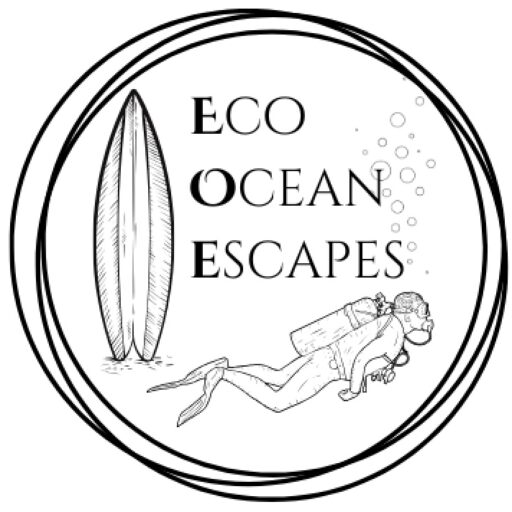
PLAN YOUR TRIP WITH OUR FAVOURITE RESOURCES:
Find hotels and resorts via Booking or Agoda
Book tours and experiences via Viator or GetYourGuide
Find a rental car via Discover Cars
Book flights via Kiwi or Booking
Search for buses and trains via 12Go or Omio
Get travel insurance via SafetyWing
Buy a digital eSIM with Airalo
By purchasing through our links, you’ll be supporting our website at no additional cost to you
About the authors
We are a team of passionate divers and surfers with decades of combined experience in the water and travelling to all corners of the globe. After years of chasing waves and descending into the deep blue, we’ve created this resource to highlight sustainably run surf camps, eco-friendly dive resorts and conservation-focused ocean trips to help inspire your next adventure.
Eco Ocean Escapes was born out of a love of the ocean, an obsession with travel and a concern about the impacts of our adventures on the environments we explore. Despite the benefits that surf and dive tourism can bring to local communities, we recognised that ocean-based adventures are not always managed in a sustainable manner.
Through our articles, we hope to inspire those seeking a responsible surf or dive trip that is all about supporting local communities, preserving our coastal environments and the incredible marine species that inhabit our oceans.
-
Sustainable Surf Tourism and Respecting Local Communities
Surf tourism has exploded over the last two decades. With travel becoming more accessible and social media exposing hidden spots, once-remote breaks in Indonesia, Central America, Morocco and the Pacific Islands are now iconic stops on global surf circuits. While surf travel brings income, jobs and global attention to coastal towns, it can also disrupt…
-
Inspiring Citizen Science Projects for Surfers + How to Get Involved
As surfers, we are intimately connected to the ocean – its rhythms, its wildlife and its health. Because of this relationship, many of us are looking for meaningful ways to protect the marine environments we love. One of the simplest and most impactful ways we can do this is by joining citizen science projects. These…
-
Understanding Marine Protected Areas (MPAs): Why divers should care
If you’ve spent time underwater (as a diver or snorkeller), you’ve probably noticed something: not all sites are beacons of health. Some reefs appear vibrant and full of life, while others show signs of stress – broken coral, few fish or algae-covered rocks. One of the biggest factors shaping the health of our oceans is…
-
Costa Rica: Best Marine Parks for Scuba Divers + Eco Dive Resorts
Costa Rica is a paradise for eco-conscious travellers and underwater explorers are no exception. With its healthy coral reefs, pelagic-rich waters and some of the most progressive environmental policies in the world, the country is a dream destination for those who want to dive responsibly. We’ve been lucky enough to visit Costa Rica several times…
-
Eco-Diving: Best Destinations for Sustainable Scuba Travel
As humans inspired by the underwater world, there is plenty of incentive to protect our coral reefs. Here at EcoOceanEscapes, we want to do our bit to save endangered marine species and keep our oceans free of trash. One impactful action we can all take is to choose sustainable diving destinations. These are nations (or…
-
Eco-Friendly Diving: How to Be a Sustainable Scuba Advocate
Understand the environmental impacts of diving and sustainable scuba practices in this comprehensive guide to eco-friendly diving. Any diver will tell you that being underwater is an incredible experience. It’s a world that not everyone has the opportunity to explore and the encounters we have with marine creatures can be life-changing. Watching manta rays soar…

We are a team of passionate divers and surfers with decades of combined experience in the water and travelling to all corners of the globe.
After years of chasing waves and descending into the deep blue, we’ve created this resource to highlight sustainable surf camps, eco-dive resorts and conservation-focused ocean trips to help inspire your next adventure.
Eco Ocean Escapes was born out of a love of the ocean, an obsession with travel and a concern about the impacts of our adventures on the environments we explore.
